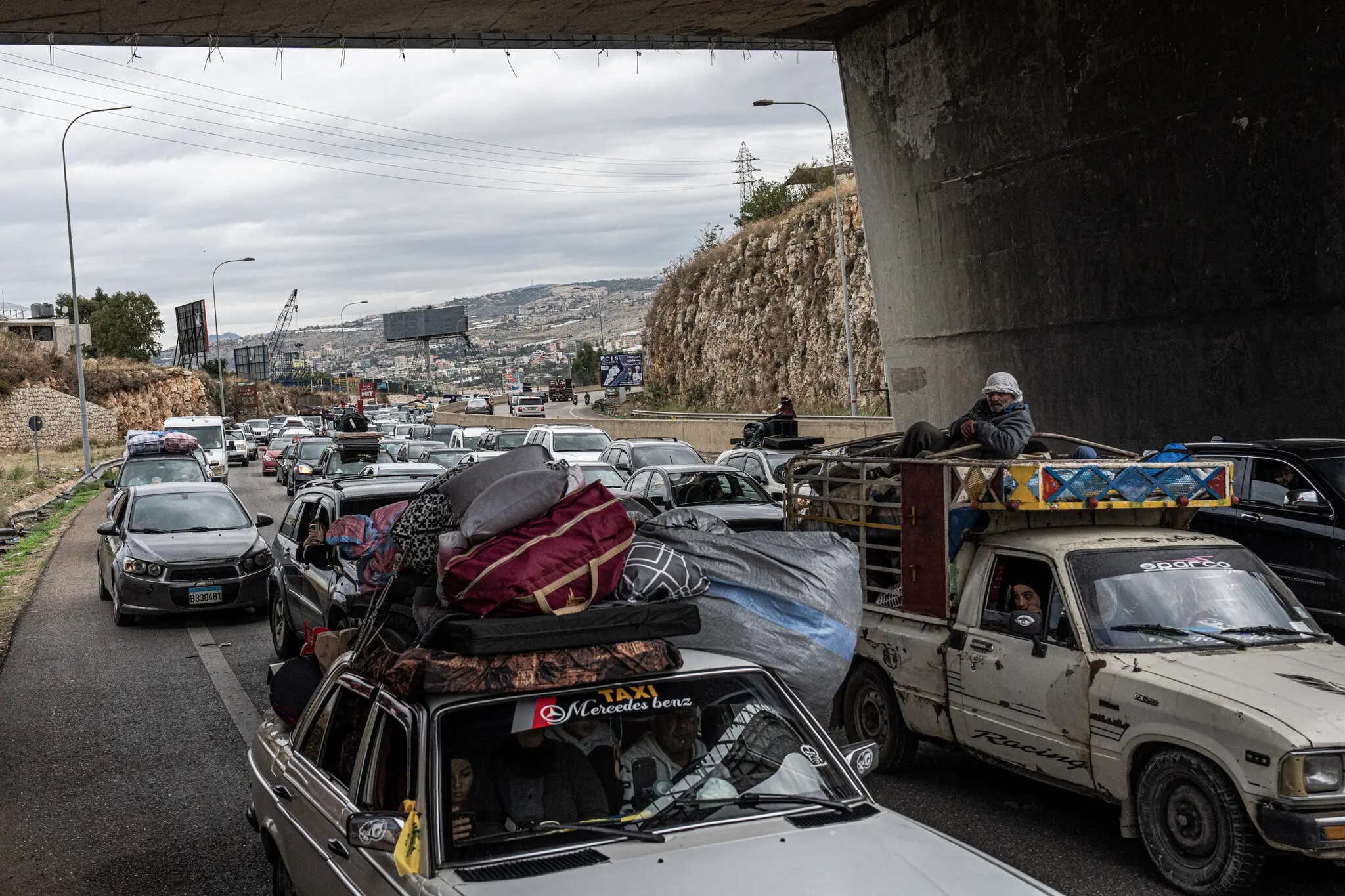
Published 11/27/2024 11:20 | Edited 11/27/2024 12:48
Residents of southern Lebanon began returning to their homes after the ceasefire agreement between the Israeli Armed Forces and the Shiite group Hezbollah came into force, at 11pm on Tuesday (26), Brasília time.
The south of the country is the place in Lebanon where the Israeli army most punished civilian structures, leaving a trail of blood with thousands of dead and injured. The region is where the bulk of Hezbollah’s military ranks are concentrated.
The ceasefire between Israel and Hezbollah brought momentary relief from a 14-month armed conflict that has killed 3,800 Lebanese and displaced more than 1.2 million people. The Israelis claim they removed 60,000 Israelis from their homes.
The truce was announced by US President Joe Biden and French President Emmanuel Macron. The United States and France were mediators in negotiations that obtained the approval of Lebanon, Hezbollah and the Israeli government, headed by Zionist Benjamin Netanyahu.
The expectation is that the agreement will serve as the basis for a cessation of longer-lasting hostilities. Americans also hope that the ceasefire between Israel and Hezbollah will bring about an end to the conflict in the Gaza Strip, which has left more than 40,000 dead.
The announced agreement is based on UN Security Council Resolution 1701, which ended the war between Israel and the Lebanese armed group in 2006 and was not seriously implemented, citing repeated violations claimed by both parties.
In an announcement on the country’s television, Netanyahu said that “the duration of the ceasefire will depend on what happens in Lebanon”, threatening to resume its aggressions on the territory if “Hezbollah violates the agreement”.
According to the document, Israel will have 60 days to withdraw all its troops from Lebanese territory, while the country’s government will have to occupy a 30-kilometer strip between the Israeli border and the Litani River as a way to prevent Hezbollah from regrouping in the region. . These requirements are contained in the 2006 UN resolution.
The agreement is five pages long and is divided into 13 sections. Check out the main points below:
Pause in the exchange of hostilities
The exchange of attacks is expected to begin around 12 hours after the official approval of the ceasefire agreement. In this way, the Israel Defense Forces and Lebanese armed groups will immediately stop any type of operation against enemy targets.
Withdrawal of Israeli troops from Lebanon
Israel will have 60 days to withdraw all troops from southern Lebanon. The Lebanese government had been pushing for this phase to be completed before that deadline.
Sources interviewed by Reuters stated that Israel must complete the withdrawal of troops within 30 days.
Retreat of Hezbollah militants in the border region with Israel
Hezbollah fighters will leave their positions in southern Lebanon and move north. In exchange, around 5,000 Lebanese army soldiers will be positioned in the border region to guarantee security there.
Possibility of Israeli attacks in case of threats
Israel received a guarantee that it could attack targets in Lebanon if threats to the country’s security were identified. This includes the movement of Hezbollah weapons.
Israeli Prime Minister Benjamin Netanyahu has said he will order attacks on Hezbollah if the group violates the agreement.
According to Reuters, Israel will use drones to monitor movements within Lebanon. On the other hand, the Lebanese government said it did not approve any such measure.
Source: vermelho.org.br

